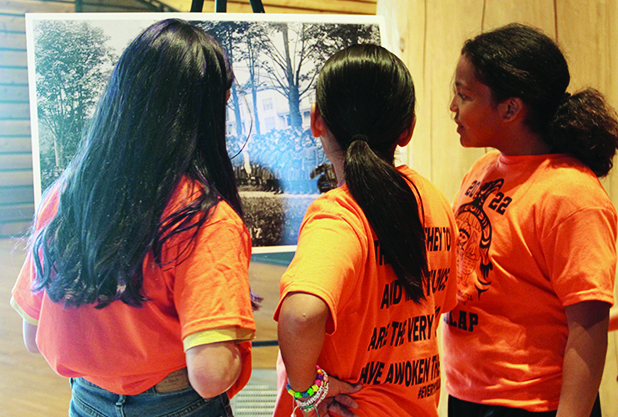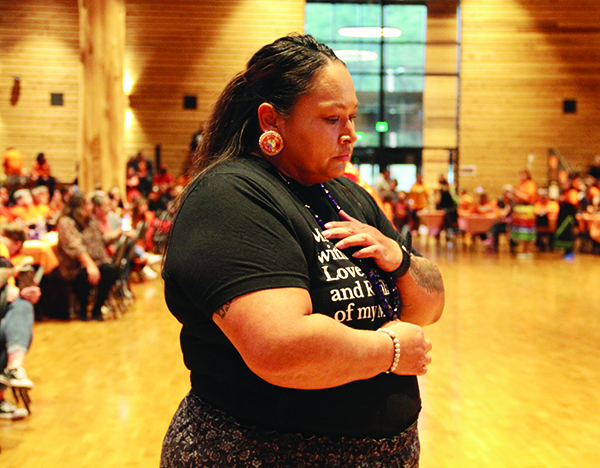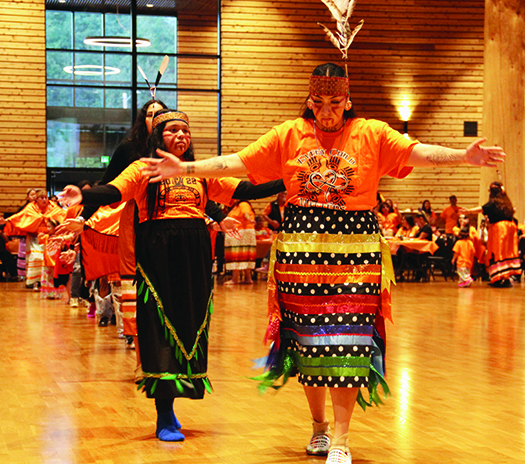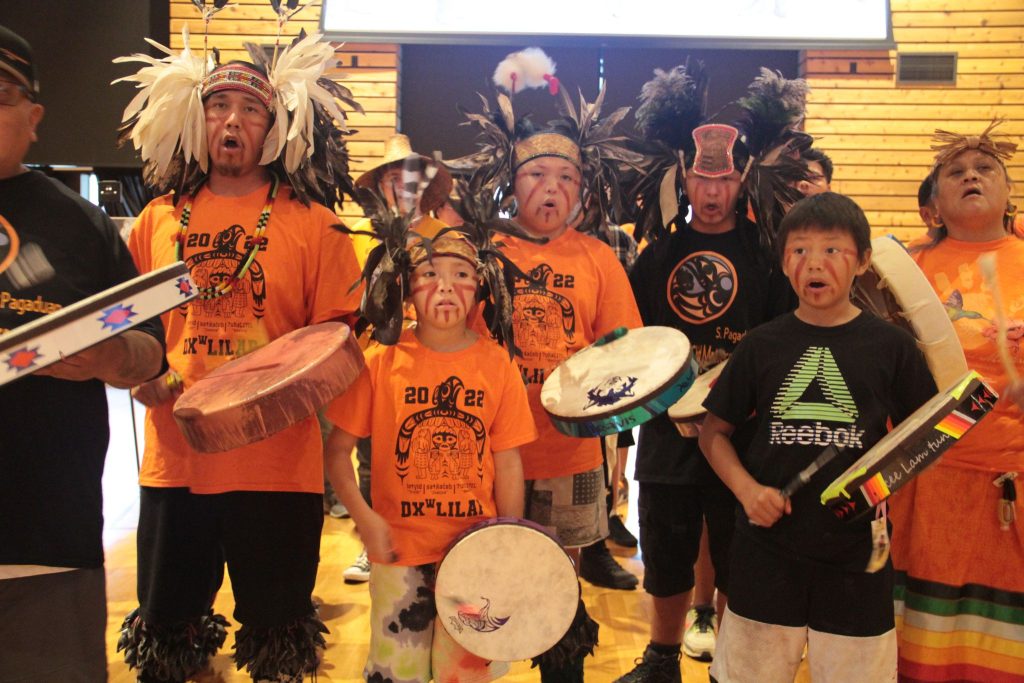
By Shaelyn Smead, Tulalip News
The Tulalip Education Division hosted their second annual Residential Boarding School Awareness Day. The evening commemorated the lost lives from residential boarding schools, and acknowledged the pain that the survivors carry with them every day. Some of the survivors shared their stories, family members spoke about the generational trauma that came from this era, and tribal leaders expressed how our community can move forward together.
Board of Directors Secretary, Debra Posey, spoke about how her grandmother was the first woman ever on the Tulalip tribal council in 1936. Long ago, they would pull their money together for gas, travel and to write letters to Washington DC, urging politicians and legislators to help our people. She spoke about how that same spirit and unity still lives in our people today through events like Residential Boarding School Awareness Day.

The emotional and heartfelt event was full of song and prayer to instigate healing and spiritual restoration. Tribal and community members wore orange to symbolize the day and show unity in efforts to raise awareness about these issues. And the phrase “Every Child Matters” was seen printed on items like earrings, t-shirts, and bags to remind those around us of the horrific acts that our families and ancestors once endured.
Throughout history our people have been silenced, demonized, and violated. Residential Boarding Schools are just another example of this horrific past and the grounds in which this country was built. The National Native American Boarding School Healing Coalition has identified more than 350 boarding schools that were operated by the US Federal government and the churches, from 1869 to the 1960s. Their philosophy being, “Kill the Indian, save the man.”
Native American children were forcibly taken from their homes and placed into these boarding schools intended to implement cultural genocide. Native children suffered various amounts of emotional, physical, sexual, mental and spiritual abuse. And in many cases, death. Children were no longer allowed to speak their native language, wear their traditional clothing, sing or dance, and partake in any of their cultural practices.

The US Interior Department has so far recognized 53 boarding school burial sites, both marked and unmarked. While the remains of our ancestors continually are found, the Interior Department acknowledged that these numbers will continue to grow as research continues. Today, 75 of the remaining boarding schools are still open, and 15 of them are still boarding.
This heartbreak is nothing new to our people, it is something that Indigenous people across the continent continue to feel and strive to overcome. Native Americans continue to fight and spread the word on this horrific era, and make the tragedies of our people known.

When speaking about the intentions behind Residential Boarding School Awareness Day, Youth and Family Enrichment Manager Josh Fryberg said “We come together to raise awareness about boarding schools, and to bring our people healing in the best way that we know how.”
For our people to be able to gather like we once did, to sing and dance, and honor our ancestors, it speaks to the level of perseverance that our people have and will continue to portray.